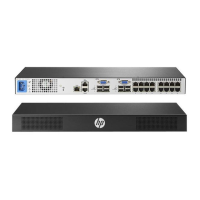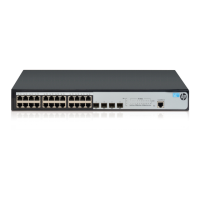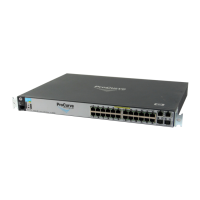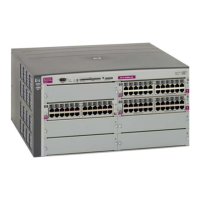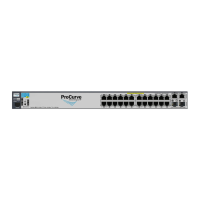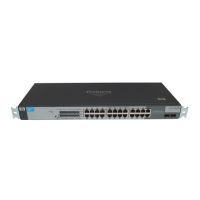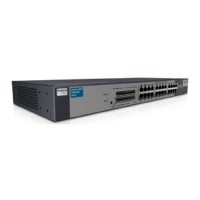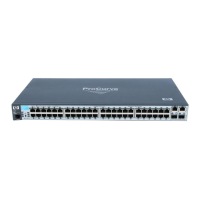Information Menu 38
The switch software uses the IEEE 802.1d Spanning Tree Protocol (STP). If RSTP/MSTP is turned on, see the “Rapid
Spanning Tree information” section for Spanning Tree Group information. In addition to seeing if STP is enabled or
disabled, you can view the following STP bridge information:
• Status of Uplink Fast (upfast)
• Current root MAC address
• Path-Cost
• Port
• Hello interval
• Maximum age value
• Forwarding delay
• Aging time
You can also refer to the following port-specific STP information:
• Port number and priority
• Cost
• State
• Port Fast Forwarding state
• Designated bridge
• Designated port
The following table describes the STP parameters.
Table 22 STP parameters
Parameter Description
Current Root Shows information about the root bridge for the Spanning Tree. Information includes the
priority (hex) and MAC address of the root.
Path-Cost Path-cost is the total path cost to the root bridge. It is the summation of the path cost
between bridges (up to the root bridge).
Port The current root port refers to the port on the switch that receives data from the current
root. Zero (0) indicates the root bridge of the STP.
Priority (bridge) The bridge priority parameter controls which bridge on the network will become the STP
root bridge.
Hello
The hello time parameter specifies, in seconds, how often the root bridge transmits a
configuration bridge protocol data unit (BPDU). Any bridge that is not the root bridge
uses the root bridge hello value.
MaxAge
The maximum age parameter specifies, in seconds, the maximum time the bridge waits
without receiving a configuration bridge protocol data unit before it reconfigures the STP
network. If the bridge is not the root bridge, it uses the
MaxAge value of the root bridge.
FwdDel
The forward delay parameter specifies, in seconds, the amount of time that a bridge port
has to wait before it changes from learning state to forwarding state. If the bridge is not
the root bridge, it uses the
FwdDel value of the root bridge.
Aging
The aging time parameter specifies, in seconds, the amount of time the bridge waits
without receiving a packet from a station before removing the station from the Forwarding
Database.
Priority (port)
The port priority parameter helps determine which bridge port becomes the designated
port. In a network topology that has multiple bridge ports connected to a single segment,
the port with the lowest port priority becomes the designated port for the segment.
Cost
The port path cost parameter is used to help determine the designated port for a segment.
Generally speaking, the faster the port, the lower the path cost.
State
The State field shows the current state of the port. The State field can be one of the
following: BLOCKING, LISTENING, LEARNING, FORWARDING, or DISABLED.
Designated bridge Shows information about the bridge connected to each port, if applicable. Information
includes the priority (hex) and MAC address of the Designated Bridge.
